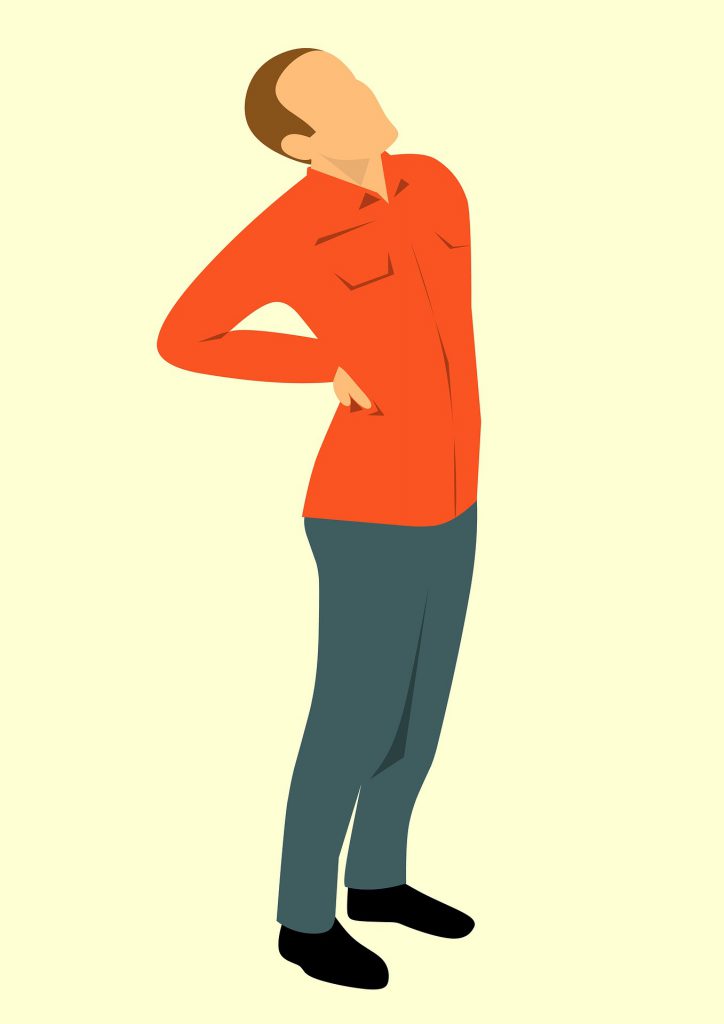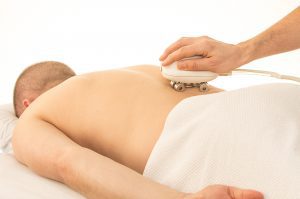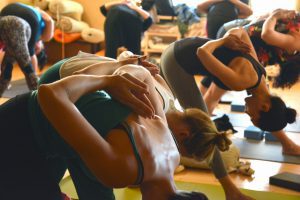Physical Address
304 North Cardinal St.
Dorchester Center, MA 02124
Physical Address
304 North Cardinal St.
Dorchester Center, MA 02124

Table of Contents
Are you having lower back pain and you suspect that it is because of your back posture? This probably might be the case, as most lower back pain is caused by poor posture. However, there are solutions to your pain. Read this post to the end to know them.
The lower back supports the weight of the upper body and makes mobility available for the body’s daily motions like bending and twisting. Muscles in the lower back are responsible for flexibility and rotation of the hips while walking. Also, it supports the spinal column, making it work effectively.
Most sensitive lower back pain results from damage to the muscles, ligaments, and joints can be caused by poor posture.
We can define poor posture as when our spine is in an abnormal position, in which the curves are accentuated resulting in the joints, muscles, and vertebrae being in a stressful position. Poor posture is the posture that results from the hardening or shortening of certain muscles while others lengthen and weaken. This often occurs due to daily use. There are different factors that can affect posture. They include professional activities and biomechanical factors such as force and repetition.
You May Also Like
How to keep a straight posture
Bad posture is the result of musculoskeletal distortion in the neck, lower and upper back. Poor posture differs from person to person because of the variety of body types. The correct posture of one person may be incorrect for another person and vice versa. However, there are ways to determine a bad posture. Some of the classic signs of bad posture include a potted belly, rounded shoulders.
Prolonged poor positioning results in a buildup of pressure on the tissue. This pressure that has been built up will cause stress and strain on the back muscles. Hence, leading to lower back pain.

People will experience Lower back pain at some point in their lives. The pain usually starts beneath the ribcage or lumber region. This pain can be so severe and is one of the causes of missed labor. However, lower back pain as a result of poor posture often gets better if worked on.
To comprehend various causes of lower back pain, it is vital to understand the design of the tissues in this part of the body. The structures of the low back include bony lumbar spine, ligaments around the spine discs, spinal cord and nerves, discs between the vertebrae, muscles of the low back, internal organs of the pelvis and abdomen and the skin covering the lumbar region.
The bony lumbar spine is designed so that vertebrae stacked together can offer a changeable support arrangement, as well as protecting the spinal cord from injury. Vertebrae also have a strong bone before the spinal cord to afford a podium suitable for the weight bearing of tissues above the buttocks.
You May Also Like
Can poor posture cause chest pain?
Low back pain can start so acute due to an injury, but it can become chronic. Proper pain management at an early stage can help limit symptoms both in time and in severity.
Identifying the symptoms and obtaining a diagnosis that identifies the underlying cause of the pain is the first step in obtaining effective pain relief. Specific identification and description of symptoms may contribute to a more accurate diagnosis and an effective treatment plan.
Low back pain is usually characterized by a combination of the following symptoms:
Pain that remains in the lower back (axial pain) is usually described as dull and painful instead of burning, itchy or sharp. This type of pain can be accompanied by mild or severe muscle spasms, limited mobility, and pain in the hips and pelvis.
Sometimes, low back pain includes an acute sensation, tingling, stinging or numbness that descends along the thighs and legs and feet also called sciatica. Sciatica is caused by irritation of the sciatic nerve and is usually only felt on one side of the body.
The sitting position puts pressure on the discs, which exacerbates low back pain after a long session. Walking and stretching can quickly relieve lower back pain, but sitting back can cause symptoms to reappear.
Depending on the underlying cause of the pain, some positions will be more comfortable than others. For example, with spinal stenosis, walking normally can be difficult and painful, but leaning forward on something, such as a shopping cart, can reduce pain. How symptoms change when changing positions can help identify the source of pain.
Many of those suffering from low back pain report symptoms that get worse in the morning. However, after getting up and moving, the symptoms are relieved. The pain in the morning is due to the stiffness caused by long periods of rest, a decrease in blood flow with sleep and possibly the quality of the mattress and pillows used.
Of course, there are other ways in which people experience lower back pain. Low back pain varies on an individual level and many factors influence the experience of pain, including mental and emotional health, financial stress or the level of exercise and activity.
Click here to read more on symptoms of lower back pain here.
You May Also Like
Can bad posture cause dizziness?
Many treatment options for low back pain are relative to the needs of each patient. Treatments include home care, medications, alternative care or even surgery.
Depending on the patient’s diagnosis, some treatments may be more effective than others. Many people find that a combination of treatments is the best.
Basic home remedies can be effective in treating mild or acute pain due to muscle fatigue, as well as reducing the effects of chronic and severe pain. Personal care is managed by the individual and can be easily adjusted. These methods include:
There can be improvements in many episodes of low back pain by briefly avoiding strenuous activity. It is not recommended to rest for more than a few days, as too much inactivity can make healing difficult.
A variant of rest is staying active but avoid activities and positions that aggravate pain. For example, if long periods of sitting in a car or in the office make the pain worse, set a timer to get up every 20 minutes and walk or stretch gently. If standing worsens the pain, avoid the tasks that require standing, such as washing the dishes in the sink. Avoiding or minimizing activities and positions that make the pain worse will help prevent or reduce painful back spasms and allow a better healing environment.
You May Also Like
Does running improve your posture?
The heat of a hot bath, a hot water bottle, an electric pad or chemical or thermal adhesive films can relax tense muscles and improve blood circulation.
An increase in blood flow provides the nutrients and oxygen that muscles need to heal and stay healthy. If the lower back is sore due to inflammation, ice or cold packs can be used to reduce swelling. It is important to protect the skin while applying heat and ice to avoid tissue damage.

The alternation of heat and ice can be particularly useful when you return to activity: applying heat before activities help to relax the muscles, allowing for better flexibility and mobility; Applying ice after the activity reduces the risk of irritation and swelling in the exercise area.
The most common over-the-counter (OTC) medications are aspirin, ibuprofen, naproxen, and acetaminophen. Aspirin, ibuprofen, and naproxen are anti-inflammatory medications that relieve lower back pain. Acetaminophen works by interfering with pain signals sent to the brain.
Physical therapy is usually part of a low back pain management regimen. The types of exercises used to rehabilitate the spine include:
Almost everyone can benefit from stretching the muscles of the lower back, buttocks, hips, and legs (especially the hamstrings). These muscles support the weight of the upper body. The more mobile these muscles are, the more you can move your back without sustaining an injury. In general, it is advisable to start with little: stretch for 20 to 30 seconds and stop stretching if it causes pain.
Strengthening the abdominal, hip and buttock muscles that support the spine, also called central muscles, can help relieve lower back pain. Two common programs are the McKenzie method and lumbar dynamic stabilization.
The McKenzie Method expands the spine by strengthening the muscle strength of the nucleus, reducing pain caused by compressed vertebral structures, such as a herniated disc caused by compressed disc space.
Dynamic lumbar stabilization strengthens the back muscles to maintain the patient’s “neutral spine” or the most comfortable posture.
Low impact aerobic exercise increases blood flow and promotes healing of an injury without shaking the spine. Low-impact aerobic exercises may include the use of stationary bicycles, elliptical or pedal machines, walking and water therapy. People with low back pain who do aerobic exercise regularly report fewer episodes of recurrent pain and are more likely to remain active and functional when pain increases.
Considering all that has been said so far, the answer to this question is obvious. Yes, poor posture causes lower back pain. The strain poor posture causes on the spine will develop into lower back pain if not corrected.

You should work on your poor posture to guard against lower back pain. Also, avoid obstructing the normal structure of your vertebrae to be free from lower back pain. This will improve healthy living and enhance movement efficiency.
Maintaining posture is not only essential when exercising, but in your everyday life, as well. The spine has three natural curves: a forward curve at the neck, a backward curve at the upper back and a forward curve at the lower back. Good posture, i.e. when the spine is aligned straight over the pelvis, helps maintain these natural curves, while a hunched posture can pull the muscles and induce extra stress to certain areas. You should be conscious of maintaining this natural position of the spine. This will definitely reduce lower back pain caused by poor posture.
Most people suffer lower back pain as the negative effects of poor posture and yet do not change the factors of their lives which causes the problem. Some people have made it a habit to walk around with bad posture or sit hunched over at a desk, while some don’t even know they’re doing it. If you slouch, the muscles and ligaments in the back strain and work double-time to keep you balanced.
Therefore, the number one step in correcting this is to simply concentrate on sitting up straight and pulling your shoulders back and down when you’re sitting, standing or walking. Correcting your posture can feel odd at the initial time because it’s not a position our bodies have become adapted to holding. But practicing over time and holding your back in healthy posture will ultimately become second nature.
Consider these helpful tips:
Sit up straight in a chair with your hands on your thighs and your shoulders down. Pull your shoulders back, squeeze the shoulders together and hold for 5 seconds. Repeat it three or four times daily to strengthen those back muscles.
Furthermore, proper lifting of an object has a lot to do in preserving your lower back. Improper lifting can cause injury to your lumbar spine, pinch a nerve, tear a muscle and of course muscle spasms.
When lifting an object, keep your chest in front of your hips and your back straight. Keep the weight close to your body, if you need to change direction while carrying something, lead with your hips.
Slot in these tips into your daily routine and wave farewell to lower back pain due to poor posture. You can read more on how to sit and stand straight here on this post.
You can also click on this link to get the best Amazon posture corrector. This will help you correct your poor posture that causes your lower back pain.
I also recommend this beautiful back stretcher by solid back. This can help with lower back pain relief treatment stretcher, chronic lumbar support, herniated disc, sciatica nerve, spinal stenosis, and many more.
Click on this link to get it now on amazon.
Poor posture is one of the many causes of lower back pain. This means you should be intentional in observing your sitting, standing, lying and even lifting postures. Correct your poor posture to prevent the development of lower back pain.
Having a poor posture is dangerous to your body. It does not only cause lower back pain but can lead to other conditions like neck pain, mid back pain, muscle spasm, and chest pain. Poor posture can also cause dizziness, fatigue and reduce movement efficiency.
Engage in exercises that increase the heart rate. Any exercise that increases the heart rate for a prolonged period benefits the body. Regular physical activity is important to maintain the range of motion and flexibility of a healthy spine. When vertebral structures remain unused for too long, stiffness and discomfort may get worse.
Self-management treatments generally do not require medical advice but you should be cautious and careful. Any type of medication has risks and possible side effects. If a patient does not know what kind of self-care would work best, it is advisable to talk to a doctor.